The Future Cruise Anti-Ship Weapon (FC/ASW) programme has entered its development phase and is moving toward Full Business Case approval in 2026, according to Defence Minister Luke Pollard.
Pollard said the project, which is being developed in partnership with European allies, continues to assess “how best it can meet and exceed user requirements which stretch well beyond current requirements and capabilities to meet future threat needs.”
The FC/ASW programme is intended to replace both the Royal Navy’s Harpoon anti-ship missile and the RAF’s Storm Shadow cruise missile, providing a new generation of precision strike capability against surface and land targets.
Once approved, the Full Business Case will formally set the programme’s Key User Requirements, establishing the operational and technical standards for UK service entry.
According to Pollard, the missile’s development aims to ensure a step change in range, speed, and survivability, keeping pace with evolving maritime threats and ensuring interoperability with key allies.
The UK and France formally launched the joint FC/ASW effort through MBDA in 2022, following a decade of studies under the Lancaster House defence accords. Both governments have since reaffirmed their commitment to the programme, with its next phase expected to define system design, test requirements, and production planning ahead of flight trials later in the decade.
Pollard confirmed that the MOD “continues to progress” the programme with European partners, saying that the weapon will be central to the Royal Navy and RAF’s long-range strike portfolio for the 2030s and beyond.


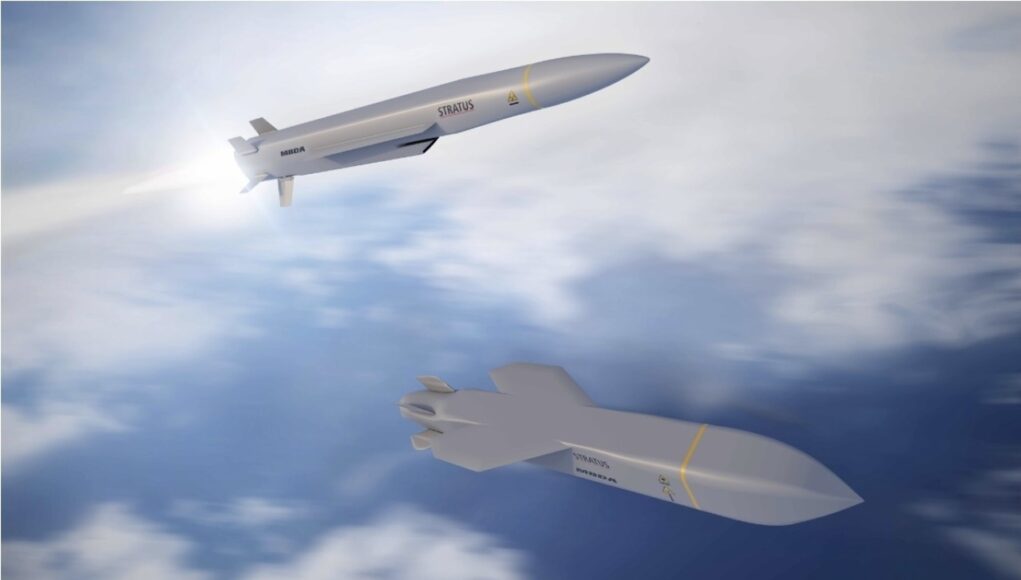


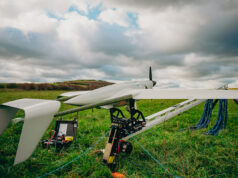
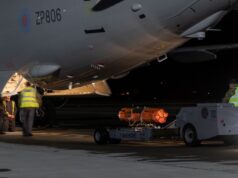


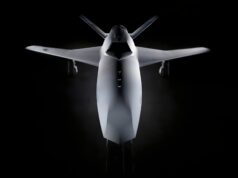


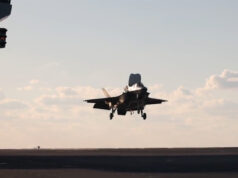

This is really needed, hopefully there’s some mechanism by which it can actually be sped up rather than slipping to the right.
I suppose the MoD won’t have the foresight to specify submarine- or ground-launched options?
Yes I’d like to see something like the USN’s NMESIS
There’s other projects for land launches but tomohawk is just better than these
STRATUS LO looks to be ~1000km, which is comparable with Tomahawk at about the same price but much more survivable.
The Anglo-German project is 2000km so the same as Tomahawk with marginally less survivability but significantly cheaper.
The export price for American weapons adds a lot of buck for your bang.
I’m not sure if anyone on here would know, but are both variants of STRATUS anti-ship capable? Or is one land-attack and the other Anti-ship?
Im sure I recall hearing the supersonic version is more suited to an anti-shipping role Vs the longer range stealthy one which is optimised for land strike?
Yeah, both variants should have an anti-ship capability. The subsonic STRATUS LO has an imaging IR seeker and the supersonic STRATUS RS has an active radar seeker. So, the Typhoon should have a standoff anti-ship missile by 2030.
Ok grateful for this, this reply does partly answers my query below though some more meat on the bone is welcome.
Do you know if it’s that we are confirmed we are acquiring both variants?
Sorry ignore that one 😂 it makes no sense, I’ll try again. Is it confirmed that we’re acquiring both variants?
I have drifted from close attention of this programme, or may have felt so having read the article. Is it still two distinct missiles in this programme, one land attack the other anti ship. I thought the land attack version was expected to be operational by end of decade while the anti-ship version was to follow about 2 or 3 years later, yet this article doesn’t seem to give any distinction within programme progress. Can someone who is more up to date add any further details or is this information related to one of the two missiles (whether they are truly separate or now deemed modified versions of a single platform). My last information suggested it was one highly stealthy but subsonic, the other supersonic with different timelines. Just seems odd considering different capabilities and reported timelines that they would be lumping in these stage achievements together with no distinction between them and relative progress, whereas this report lumps in land attack and anti ship as if they are still at the same stage which would suggest a very early stage still. Certainly sounds very general and nebulous unless things are different to what I last read about the programme.
Two missiles, both launched from all of mk41, angled deck canisters and jets.
LO is subsonic but stealthy, has a new propulsion system from RR and Safran for extremely long range (likely an efficient turbofan) and is secretive enough that the current models don’t even show an air intake. IIR seeker for anti-ship and target matching and probably quite a big warhead.
RS is ‘high supersonic’ probably c. Mach 3 and using propulsion similar to Meteor but also with long range. Active radar seeker for detecting vehicles, ships and even large aircraft, with a hint in a recent MBDA video that it will be able to actively evade missiles fired at it using the seeker. Probably a slightly smaller warhead than LO.
‘a hint in a recent MBDA video that it will be able to actively evade missiles fired at it’
I’m more sceptical on this being active avoidance. I think its more likely that MBDA were showing a stylised version of a terminal phase evasive manoeuvrer, as is common across a variety of modern missiles.
I think that’s a distinct possibility. We now know that Iskandar has radar detection and countermeasures capabilities. Against older radar systems that use older pulse-doppler or semi-active radar homing (SARH) techniques, it is relatively easy to detect when you are being locked up for missile tracking. The newer AESA modes not so much, as it requires more expensive processing. Which for a one way weapon isn’t really cost effective, unless you had to guarantee the missile reached the target.
A lot will depend on the radar that the Stratus-RS gets. If its a traditional mechanically scanned radar, then it will struggle with the ability to search for and track its target, whilst conducting electronic surveillance. Whilst if they use an AESA radar, it has the scope for doing multiple activities simultaneously. Where it could be used for detecting and its data used for analysing threat radars. The other option would be like Iskander to fit a dedicated radar warning system. But, it is quite possible to link the radar detection to pre-programmed evasion manoeuvres, which I believe Iskander can also do.
Fair enough, I’d no idea the technology was in widespread use. I knew the Americans had been experimenting with it on their LRASM and JASSM.
It would be odd for STRATUS to get a mechanically scanned radar when even MBDA’s affordable CAMM has a GaN one, surely?
I didn’t know that existing missiles also use similar techniques, have there been any data on its effectiveness on Iskander in Ukraine, for example?
As far as I’m aware CAMM does not use a passive electronically scanned array (PESA) or active electronically scanned array (AESA) radar. It uses a traditional mechanically scanned pulse doppler radar, much like that used by Meteor. I do believe MBDA are looking at an AESA future upgrade for CAMM. The Gallium Nitride components are used within CAMM, as these have two benefits, when powered they generate less self-induced noise. But can also operate at higher currents. Meaning items such as power amps can either be made smaller for the same power output or operate with a higher gain and for much longer.
What few comments I could find in articles on the matter were mostly along the lines of ‘digital solid state active’ as a description of CAMM’s seeker. The images supposedly showing the internal arrangement are just as ambiguous.
It would have been strange for MBDA not to have used modern technology in the 2010s CAMM.
You’ll find a lot is down to cost. The mechanically scanned radar will likely use a flat planar slotted antenna. As these give good enough performance, and are pretty inexpensive to produce. But as countermeasures have become more affective, the need for AESA based radars has increased.
Meteor is currently going through the Block 2 design phase. The rumour is it’s getting an AESA radar. Similarly the next upgrade for Aster has been said to be an AESA radar.
Thanks for that Torpedo certainly an update on my knowledge of the progress on these missiles, surprised I missed some of that.
Leh I don’t know if that is novel or not but worth noting that Meteor is considered amongst, if not the best long range air to air missile because of its powered terminal phase whereas competitors mostly have used up their fuel well before that and are thus less manoeuvrable at that stage and thus able to counteract target manouvering. So if that quality is exploited in this new missile it might be at the forefront of manoeuvrable missiles able to exploit it to potentially avoid defensive missiles more than most very late on in its flight.
Was just reading the Wiki article just now to get myself up to speed, one thing that interested me was that the design and propulsion of the Stratus-RS, being done by the French, is apparently quite similar in design to the ASMP. Wonder if there’s a thought there that we might actually get ourselves back into the air-launched deterrent game again. If we did, it’d be a whole lot more believable than air-launched gravity bombs from F-35s…
Also interesting about the large aircraft/ ‘airborne high value targets’ piece- that’s what the US is currently doing by strapping SM-6s onto F/A-18s. Will be interesting to see if Stratus-RS feeds into whatever comes after Aster, in a kind of reverse-direction development.
The USN has had to do something, as their F18E/Fs are likely to be significantly outgunned facing off against Chinese J20s and J35s, using the current PL15 and PL17, not to mention the future PL21. But a lot will also depend on the AEW assets China will use as well. The E2D Hawkeye is expected to detect the J15/J16 over 500km away. Both the J20 and J35 should be able to get a lot closer before being detected. Perhaps closer to 300km, which puts it in launch range of the PL15 and definitely the PL17. Similarly the non-stealthy F18 won’t be able to get into AMRAAM AIM-120D range of a Chinese AEW platform without being engaged by a Chinese combat air patrol.
The AIM-174B (air launched SM6) balances up the equation. With an expected range over 250km perhaps even more than 300km. The Hawkeye’s combat air patrol, if armed with AIM-174B, means that they can push out the effective combat range. Though the F18’s radar won’t have the range to detect this far. So will require the AIM-174B to acquire its targets via the Hawkeye and thereby provide a longer aerial denial bubble. Or it gives the F18 a fighting chance to engage Chinese AEW assets. The more useful question is, will it be integrated on the F35C? Granted it’s too long to fit in the weapons bay of the F35, but even under the wings. It would give a F35 a serious advantage. As it should be able to get a lot close to a Chinese AEW platform before being detected.
The Status RS will likely be used in a similar fashion. Both the future GCAP and SCAF are expected to use it. So will it be scaled to fit in the two aircrafts weapons bays? At present it looks like GCAP is going to be bigger than SCAF, based upon SCAF needing to be carrier capable. Which means it will likely have a smaller weapons bay. IF the aircraft can carry it in the weapons bay, this will give a significant advantage, even over the F35. As the weapon is kept out of sight from long range radar.
There is an obvious parallel to France’s Air-Sol Moyenne Portée-Amélioré (ASMP-A) supersonic nuclear armed cruise missile. Which is a Mach 3 missile with a range over 500km. Though it is bigger than the AIM-174B at 5.38m long vs 4.7m. Will the Stratus RS be of a similar size to the ASMP? If so, it will have a substantial range against aerial targets.
Can Stratus RS be used as a surface to air missile, yes. But if it can only reach Mach 3, it will be a bit slow, unless it has a monster 1st stage rocket booster.
I would imagine that SM6’s booster for surface launch is also quite hefty, I wouldn’t discount it as a high-cost silver bullet for those critical situations.
Agreed that it would be crazy if either GCAP or SCAF couldn’t fit at least one of the RS internally- unless it became utterly impossible to meet other requirements.
I understand where the USN is coming from, regarding the Chinese in the Pacific. But that’s a more exotic use case to me; we are more likely to be fighting in Europe than the Pacific, where high value aircraft are fewer. But I did read that they see a SEAD/DEAD role for it too, as a HARM equivalent I presume. It could also be used for hitting high value mobile ground targets that may not be on station long, like TELs for short range ballistic missiles and suchlike. I see that as more valuable to the UK’s position, but it’s always nice to have the capability to fight in the Pacific, which is the point of AUKUS really.
When Italy signed on in 2023, they gave an updated press release saying that the anti-ship variant (now called Stratus-RS, but at the time TS10) would be ready 2034, while the land-attack variant (now Stratus-LO, but at the time TP15) would be coming online 2034.
You’re right about the two different missiles, but @torpedoJ has already given you a decent run over those.
Thanks Joe I assume one of your dates is wrong there from what I remember the land attack missile would be coming sooner but as you say there was an update when Italy joined (the substance of which I think I missed) so don’t know if the date has changed at all. Think it was about 2030 or even earlier. Hadn’t heard even that name ‘Stratus’ being used so certainly missed some of it.
Morning Spy, yeah, Stratus is only a few months old if that- so you’re not that behind the curve!
I was going off the Wiki page, but then went to check the source and it turns out the Wikipedia article had swapped them. Land attack is indeed coming first, still slated for 2028. Technically it does have a secondary AShM capability too, so it’d be like a cross between NSM and TLAM blkV maritime in that role.
“STRATUS”
I’d missed that. Is that official?
Yep, sadly not Blue Stratos, as that could kill all women within 50ft. Probably not a good thing to advertise.
Lynx would have been better if we are going there. 🤪
It is indeed, for both versions, with the suffixes LO (low Observable) and RS (Rapid Strike) for the stealthy and fast versions respectively. I believe I’ve seen quotes from MOD representatives calling them that as well.
Yeah, MBDA renamed up, presumably to boost their export potential. FC/ASW doesn’t have much of a ring to it (nor does STRATUS for that matter).
What was it RJ Mitchell said about the Spitfire?
“Just the sort of bloody silly name they would have given it”.
Well considering they were going to call it Shrew until he objected he got out rather lucky on that one. You sure you aren’t mixing that up. Spitfire and Shrew notably both in one sense refer in the Middle Ages to a woman with ‘too much of an opinion’ or attitude, degree being the only difference. Think the Spitfire went up by a similar degree between those two names in its effectiveness too.
A quick Google indicated that Shrew was Mitchell’s preferred name and he did indeed think Spitfire ‘bloody silly’.
Neither is the most PC name they could have chosen, but the other way lies idiocy like Edgewing so it all came good in the end.
We could also have the Virago, Harridan, Scold, Nag, Fishwife. So many come to mind! The Navy already have their minds on Vixen, of course.
Not just me then. Perhaps it was when I was on hols.
“Pollard said the project, which is being developed in partnership with European allies, continues to assess “how best it can meet and exceed user requirements which stretch well beyond current requirements and capabilities to meet future threat needs.”
So they keep interfering and moving the goal posts as to what they want. Gee, I wonder if there might be negative consequences to doing that ?
There’s only so far they can move the goalposts now, at least for the subsonic, British-led variant. The design for that has been frozen and revealed – it’s the Storm Shadow looking missile in the headline image.
Which only confirms the somewhat nebulous if not confusing nature of this release as the development and timelines seem very different for the two missiles. Can this really be about the later Stratus RS version, that would make more sense in the greater picture.
Forget the crap, we could be in a shooting war before it ever gets off the drawing board.
A little expediency please.
It’s off the drawing board. The prototypes are have been wind-tunnel tested, the design completed and the production stage is set to begin by the end of this year (that’s not full-scale production).
As an aside, have the RN still got their 11 sets of NSM still coming? Wasn’t it 6 for the T45s and 6 for the T31s? Nothing more? The Norwegian T26 model was showing up to 4×4 NSMs on the hangar roof which will free up the 3x mk41 silos for other stuff – but not sure exactly what.
*5 for the T31s.
It’s not for the T45 and 31 it’s for the current fleet of T23 and 45 and so far no 45s have had them
I’ve not seen any official notification that NSM will be moved from T23 to the T31s. We all expect it, but nothing from HMG or MOD that I’ve spotted.
Then why are we years away from the missile being operational.
It won’t be ready soon for the Typhoon because integration is a pain. There’s things to test like how it affects flight characteristics when it’s carried under the wings on different hardpoints. The ship one will happen first, where Stratus will be fired from a Mk41 VLS. However no current RN ships have Mk41, the first will be HMS Glasgow, operational in 2028.
Is there potentially for this to be an air-launched anti-ship missile?
Maritime teeth for F35B, Typhoon and Tempest?
F35B won’t get them
I think Typhoon service entry is likely to be two or three years behind naval, so some people are talking about 2030, but a lot of that is based on an old announcement by the then procurement minister in 2021, before we’d even agreed with the French what FC/ASW actually was.
The two missiles have to cover four distinct mission classes:
Anti-ship
Land strike
SEAD/DEAD
High-value anti-air.
I’m interested what high-value anti-air means. Does that include other missiles?
The first prototype of the LO missile has already been built, so the “operational by 2028” target might be more dependent on whether HMS Glasgow will be operational by then, as the type 26s will be the only platform capable of firing them until T31 gets its Mk41s.
Sometimes it seems glaciers move faster than the MOD.